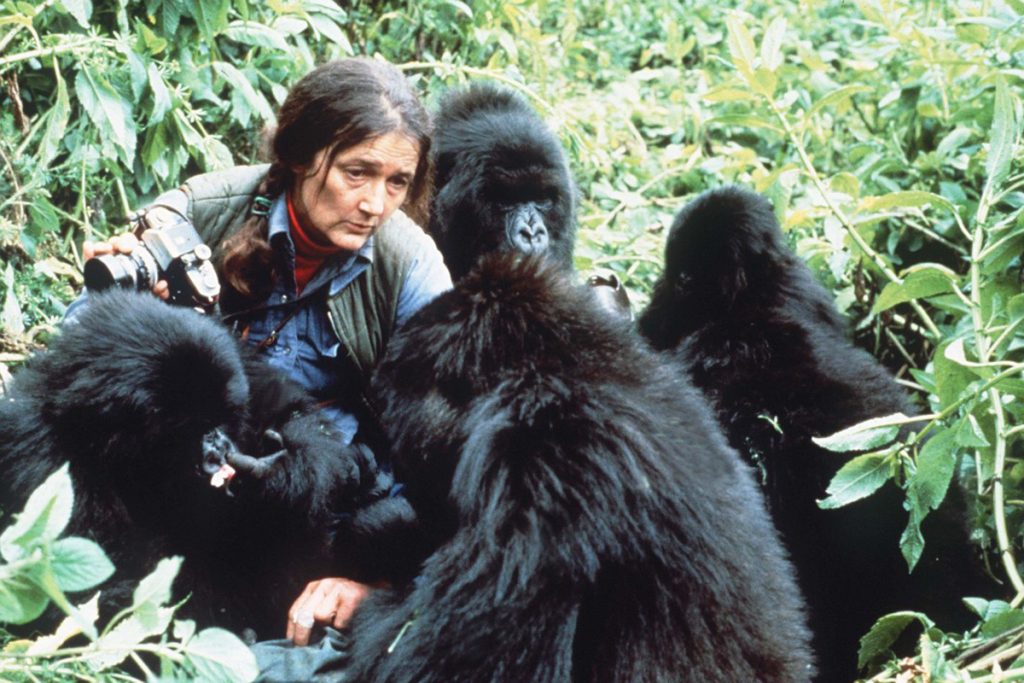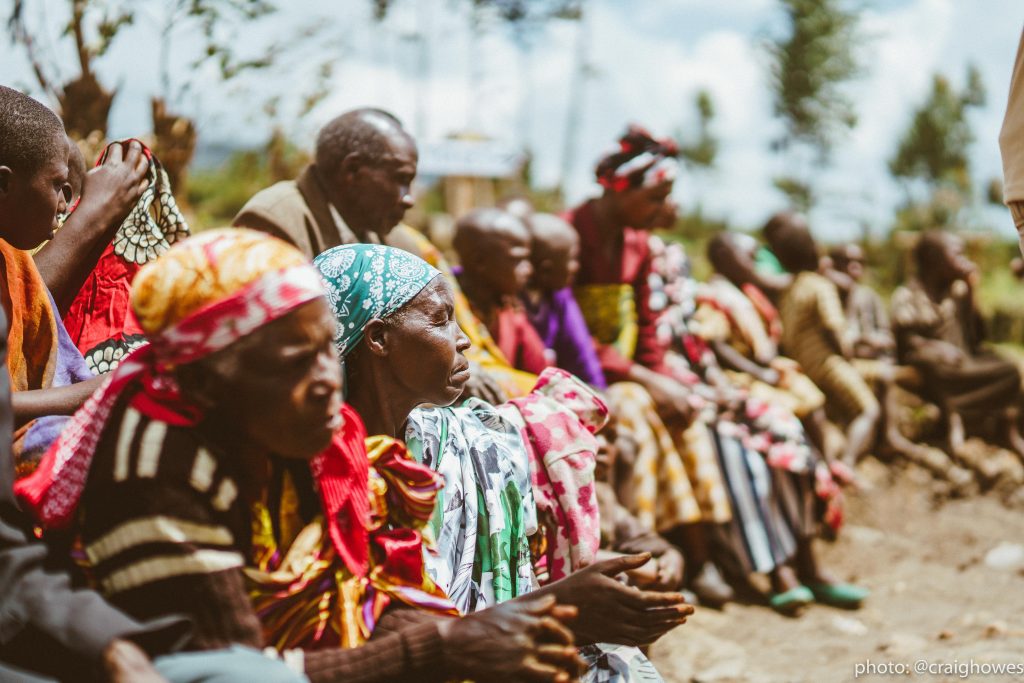Gorilla conservation began in the late 1960s under the passionate eye of primatologist, Dian Fossey. After spending countless days in search of the elusive mountain gorillas she so loved in the montane forests of Rwanda, Fossey sadly found she was beaten to the punch by poachers and other human intruders who were quickly wiping out the remaining populations of these magnificent apes. Two small tents in the wilderness of the Virungas launched what is now her 50 year legacy of gorilla conservation, the very spot where the Karisoke Research Centre now sits, an organisation dedicated to the preservation and conservation of gorillas and their habitats.
Ever since Fossey began her dedicated work to bring the primates back from the brink of extinction, strategies to protect, maintain and conserve mountain gorillas have continuously been put in place throughout the years. Now, the mountain gorilla proudly sits at the very heart of Rwanda’s booming tourist industry and growing support and dedication to ecotourism means that increasing visitor numbers and conservation efforts can work in tandem with one another to be mutually beneficial to both trekkers and the habitats they explore. Yet Fossey’s devoted efforts in gorilla conservation are a continuing challenge in Rwanda, Uganda and the Congo and although gorilla populations are up since she began her research, protecting them and their habitats is an on-going task and one which is greatly aided by tourism.

Currently, Gorilla permits cost $1,500 per person in Rwanda, $600 per person in Uganda and $450 in the Congo. These are determined by the tourism bodies in each respective gorilla trekking country: the Uganda Wildlife Authority, the Rwanda Development Board and the ICCN in the Democratic Republic of Congo. But what exactly do these trekking permits pay for? As well as giving travellers the opportunity to get up close and personal with these magnificent and endangered primates, there are a number of reasons the permits are in place and furthermore, why the lofty cost of them hugely benefits conservation and community efforts in and around the parks.
Foot Traffic
With the rise of gorilla tourism to Bwindi and Volcanoes over the last 40 years, there is an even greater need to protect and conserve the land and habitats that both the gorillas and the local communities call home. As humans get better access to gorillas, moving closer into the habitats of these unique creatures does have some drawbacks. Greater foot traffic means a greater risk of human diseases being passed on to gorilla communities, vegetation being damaged and an over-familiarisation of gorillas with humans. This is combatted by high permit prices to limit numbers in the parks and is also why trekking groups are kept small (around eight people) so over-crowding doesn’t work against the nature of these gentle giants. The Dian Fossey Gorilla Fund is one such endeavour which does a wonderful job at monitoring and studying mountain gorillas and working out their daily needs in order to sustain their wellbeing. Although Fossey was a big advocate for habituating gorillas to the presence of human observers, the fund works together with Rwandan national park authorities to work out exactly how much these vulnerable creatures can take in order to preserve the wildness of their environments and their inherent nature.

Monitoring
Although mountain gorillas have been moved from the critically endangered to the endangered list and populations are increasing, the African Wildlife Foundation marks an overall decline in Eastern gorillas by 5% each year. This is generally due in part to deforestation, poaching and human-borne diseases so ensuring habitats have around the clock monitoring is vital to their protection.
The Karisoke Research Centre where Fossey began her work all those years ago now puts an emphasis on training the next generation of scientists and conservationists to carry out the much-needed work around gorillas and their forest homes. The Fossey Fund brings together hundreds of students each year through educational programmes and regional conservation and scientific meetings in order to spread the knowledge and enthusiasm to conserve and protect. Without a sustained interest from around the globe to observe gorillas as thriving in their natural habitats, much of this work could not be supported.
With funds gained from the cost of gorilla trekking permits, gorilla doctors can monitor and treat the primates for diseases, security and tourism police are able to patrol the parks to check for rebel groups and poachers and highly experienced rangers can lead trekkers on their unforgettable gorilla experiences. Behind the scenes, scientists are able to do the critical research into the gorillas and forest ecosystems that travellers so love to discover. What’s more, seeing as trekkers only have around an hour with the primates once they’ve been located, skilled trackers, who take to the forests ahead of the crowds, work together with rangers to save explorers time and effort when embarking on their journeys. So much goes into creating a rewarding and safe experience for both trekkers and the habitats they seek, and it’s a portion of the gorilla permit costs which allow this invaluable work to continue.
Community
Protecting the wildlife that inhabits the national parks requires a strong relationship with the people that also call the surrounding areas home. Park authorities where gorillas dwell started an annual profit sharing scheme with local communities meaning money generated from gorilla tourism not only benefits the gorillas but also helps fund local projects and needs. As of 2017, communities around Rwanda’s Volcanoes National Park receive $150 for each tourist permit. This economically empowers communities and not only allows them to fund their own development projects but also boosts their livelihood with many from the communities being employed as park guides, rangers, hoteliers and porters. By being able to share the profits of gorilla tourism with local communities, conservation becomes a communal responsibility and one which can be thoroughly nurtured and continuously encouraged. With the help of conservation funds and educational programmes, even many ex-poachers have been enlightened to the plight of the mountain gorilla and are able to benefit greatly from joining the supportive network of gorilla conservationists.

So without gorilla tourism and the steep price in permits, where would gorilla conservation be today without all those that help it flourish? Certainly less rewarding for travellers and far less beneficial for the gorillas they seek. Fossey’s legacy continues to expand and raise awareness throughout local communities and far beyond and with this, parks like Bwindi and Volcanoes can be kept perfectly wild and protected for years to come to the enjoyment of both primate and traveller. It’s a happy cycle which keeps both ecotourism and conservation thriving in these magical parks and the part you play as a visitor is no small feat.
Paying out for a gorilla trekking permit not only lasts for as long as your African adventure but far beyond that too.
